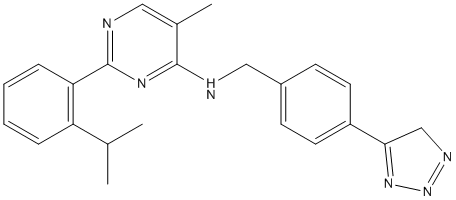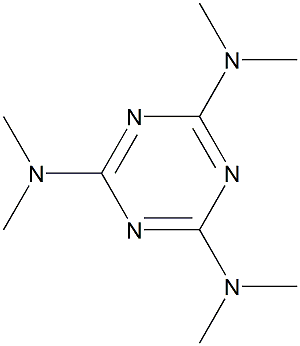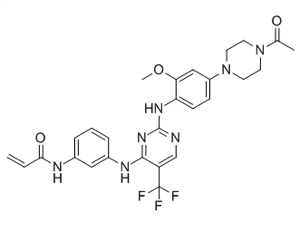Thus, the increase in SOD observed in the hepatic tissue is beneficial, because it suggests an adequate response to this superoxide excess. Conversely, treatment with U. tomentosa resulted in a reduction of the SOD levels in the tumour  tissue, which in turn constitutes an advantageous result as well, as it indicates that the tumour cells are being left more susceptible to the effects of the superoxide anion. This apparent selectivity was also observed for Cat levels. The importance of Cat in the neoplastic scenarios has long been appreciated, as various studies have demonstrated that increased activity of this enzyme in tumour cells constitute a protection mechanism against cell death induced by reactive oxygen species, and that by inhibiting this enzyme, the neoplastic cells become once more vulnerable to this outcome. Our findings indicate that Cat levels were reduced in the tumour tissue and increased in the liver, both these results occurring simultaneously and due to the treatment with the U. tomentosa BHE extract. Indeed, we may be witnessing a protective effect on the liver associated with a further exposure of the tumour cells to ROS-induced necrosis/apoptosis. Meaning to further characterize this observation, the protein expressions of both catalase and SOD-1 were assessed by Western blot. As no statistically significant differences were found among the experimental groups, it seems appropriate to assume that the treatments could be increasing the individual output of these enzymes, resulting in a greater overall activity despite equivalent expression rates. In addition to this hypothesis, the lack of differences in the expression of SOD-1 does not exclude an eventual effect upon the expression of the other two isoforms of this enzyme, namely SOD2 and SOD3. According to Valko et al., the lower Cat activity induced by various tumours has been attributed to an increase in TNF-a level, which reduces hepatic Cat activity. The BHE extract and its BuOH fraction expressively reduced the TNF-a level on the liver homogenates of tumour-bearing rats when compared to control, perhaps contributing to a recovery of the hepatic Cat activity in these animals. The mensuration of this cytokine in liver homogenates also indicates an anti-inflammatory activity of both the BHE extract and its BuOH fraction. Interestingly, however, we observed an effective reversal of TNF-a to baseline values as a result of the former treatment, leading us to conclude that, regarding this parameter, the BHE extract is MK-2206 Akt inhibitor indeed more effective than its BuOH fraction. The CHCl3 fraction exhibited a mild reduction of this cytokine, which seems natural considering the recognized anti-inflammatory properties of isolated pentacyclic FDA-approved Compound Library oxindole alkaloids. On the whole, reduction of the cytokine TNF-a is bound to ameliorate some hallmarks of this tumour, such as cachexia. The tumour levels of TNF-a were quite lower when compared to those of the liver. This is probably caused by the histological differences between these tissues; with the latter containing TNF-a-secreting Kupffer cells and the former encompassing mainly fibroblasts that do not secrete TNF-a. Regarding the tumour production of this cytokine, while the same tendencies as those of the liver were observed, no statistical significances were found.
tissue, which in turn constitutes an advantageous result as well, as it indicates that the tumour cells are being left more susceptible to the effects of the superoxide anion. This apparent selectivity was also observed for Cat levels. The importance of Cat in the neoplastic scenarios has long been appreciated, as various studies have demonstrated that increased activity of this enzyme in tumour cells constitute a protection mechanism against cell death induced by reactive oxygen species, and that by inhibiting this enzyme, the neoplastic cells become once more vulnerable to this outcome. Our findings indicate that Cat levels were reduced in the tumour tissue and increased in the liver, both these results occurring simultaneously and due to the treatment with the U. tomentosa BHE extract. Indeed, we may be witnessing a protective effect on the liver associated with a further exposure of the tumour cells to ROS-induced necrosis/apoptosis. Meaning to further characterize this observation, the protein expressions of both catalase and SOD-1 were assessed by Western blot. As no statistically significant differences were found among the experimental groups, it seems appropriate to assume that the treatments could be increasing the individual output of these enzymes, resulting in a greater overall activity despite equivalent expression rates. In addition to this hypothesis, the lack of differences in the expression of SOD-1 does not exclude an eventual effect upon the expression of the other two isoforms of this enzyme, namely SOD2 and SOD3. According to Valko et al., the lower Cat activity induced by various tumours has been attributed to an increase in TNF-a level, which reduces hepatic Cat activity. The BHE extract and its BuOH fraction expressively reduced the TNF-a level on the liver homogenates of tumour-bearing rats when compared to control, perhaps contributing to a recovery of the hepatic Cat activity in these animals. The mensuration of this cytokine in liver homogenates also indicates an anti-inflammatory activity of both the BHE extract and its BuOH fraction. Interestingly, however, we observed an effective reversal of TNF-a to baseline values as a result of the former treatment, leading us to conclude that, regarding this parameter, the BHE extract is MK-2206 Akt inhibitor indeed more effective than its BuOH fraction. The CHCl3 fraction exhibited a mild reduction of this cytokine, which seems natural considering the recognized anti-inflammatory properties of isolated pentacyclic FDA-approved Compound Library oxindole alkaloids. On the whole, reduction of the cytokine TNF-a is bound to ameliorate some hallmarks of this tumour, such as cachexia. The tumour levels of TNF-a were quite lower when compared to those of the liver. This is probably caused by the histological differences between these tissues; with the latter containing TNF-a-secreting Kupffer cells and the former encompassing mainly fibroblasts that do not secrete TNF-a. Regarding the tumour production of this cytokine, while the same tendencies as those of the liver were observed, no statistical significances were found.
Month: July 2019
This most intriguing was observed for the SOD enzymatic system which is responsible for the conversion of the superoxide anion
To the original BHE extract containing all groups of compounds. According to our chemical analyses, the CHCl3 fraction contains alkaloids, triterpenes and 7-deoxyloganic acid, the latter also found in the BuOH fraction, along with antioxidant substances such as phenolic glycosides and anthocyanidins. These observations are further supported by the DPPH results, which point out the BHE extract as the most effective free radical scavenger. Significant antioxidant activity in the BuOH fraction was detected, while the CHCl3 fraction had no antioxidant activity whatsoever. The results of this assay are in accordance to the aforementioned composition of these three substances and are adequate for the testing of our hypothesis. Expressive reduction in tumour weight and volume was observed in W256 tumour-bearing rats treated with both BHE extract and BuOH fraction. This restriction of tumour development was directly related with TWS119 increase in the survival rate, as shown in the figure 8B. All and two thirds of the rats treated with the BHE extract and BuOH fraction, respectively, survived for the tested period, while none of the animals treated with the CHCl3 fraction nor those who received vehicle survived. These results clearly show that by fractioning U. tomentosa extracts, active compounds that present anti-neoplastic effects are also separated, as well as constitute evidence of the importance of the oxidative stress modulation as part of the action mechanisms of this plant. The results obtained with the in vivo oxidative stress parameters also confirmed these findings. SOD and LPO measures in the liver and tumour tissue demonstrated a major beneficial effect of the U. tomentosa BHE extract and BuOH fraction, while the CHCl3 fraction consistently Tofacitinib JAK inhibitor produced negligible results. It is noteworthy that the BHE extract was significantly more successful than its BuOH fraction in heightening hepatic SOD levels, which were already increased in the control group as compared to the baseline group as a natural reaction to the considerable oxidative stress caused by the neoplastic process. Regarding Cat measures in both tissues, only the BHE extract achieved a statistically significant effect as compared to control, effectively increasing hepatic Cat levels to similar values as those of the baseline group. Despite the evident lower levels of GSH in tumour tissue found in the BHE extract and BuOH fraction-treated groups as compared to control, only those of the BHE extract were statistically significant. This is a favourable result, taking into account the important role that GSH plays in such cellular processes as the transport of amino acids, the synthesis of proteins and DNA, and even cellular detoxification. It seems appropriate to establish that the biological activities of U. tomentosa are indeed enhanced by the synergic action of its various components. It is remarkable to acknowledge that U.  tomentosa seems to exert a degree of selectivity over its site of action, an observation which supports our previous findings. Indeed, in various parameters we observed that the BHE extract had different, if not opposite effects in the liver and tumour tissue. Even more important is the fact that this selectivity resulted in an apparent protection of the hepatocytes, which came along with a simultaneous attack to the neoplastic cells.
tomentosa seems to exert a degree of selectivity over its site of action, an observation which supports our previous findings. Indeed, in various parameters we observed that the BHE extract had different, if not opposite effects in the liver and tumour tissue. Even more important is the fact that this selectivity resulted in an apparent protection of the hepatocytes, which came along with a simultaneous attack to the neoplastic cells.
Evaluating the anti-neoplastic effects of fraction composed roughly of alkaloids and a fraction composed
Thus, the present study aimed to evaluate the anti-neoplastic effects of two different fractions obtained from a hydroethanolic extract of U. tomentosa: one R428 composed roughly of pentacyclic oxindole alkaloids and triterpene glycosides, and the other composed of most of the substances other than alkaloids present in the original extract, namely, phenolic glycosides and other antioxidant substances. Additionally, we compared the effects  of both fractions to those of the original hydroethanolic extract. The chosen in vivo tumour model was the Walker-256 carcinosarcoma in rats, which was the same model used in our previous experiments. Currently, considerable attention is being granted to its anti-neoplastic potential as well. Various preparation methods and administration regimes have been tested against tumour lineages in vitro and in vivo, with promising results. Our current efforts follow the wake of some investigators, that experimented with fractions and isolated compounds of U. tomentosa extracts with the aim to attribute the observed pharmacological activities to a specific substance or group of substances. Nowadays, it is known that Uncaria tomentosa accumulates alkaloids, triterpenes and other classes of compounds, including phenolic glycosides, flavonoids and proanthocyanidins. Among the most abundant alkaloids found in this plant, there is a mixture of pentacyclic oxindole stereoisomers that differ in configuration at chiral centres in the positions 3, 7, 15, 19 and 20. In attempting to explain the anti-neoplastic effects of U. tomentosa, researchers have demonstrated interest in this group of substances, based on previous observations that gave them credit for its anti-inflammatory activity. However, it is important not to overlook the fact that cancer is a vast group of diseases that may vary substantially among them. Hence, the number of LY2109761 possible clinical scenarios is equally diverse, with different outcomes among tumour lineages, individuals affected, and even throughout the various locales affected by the neoplastic process in each individual. Pilarski and colleagues demonstrated awareness of this wide range of possible deviations by cross-testing extracts of U. tomentosa of different alkaloid content against several tumour lineages, both in vivo and in vitro. Interestingly, their results suggest that preparations with greater alkaloid concentrations do not necessarily achieve the best anti-neoplastic effects. As possible explanations for their results, the authors suggest an apparent selectivity of the fractions with higher alkaloid levels for some tumour lineages, low water solubility of isolated alkaloids and issues regarding the IC50 measures. Taking into account the previous observations of our research team, including the importance of oxidative stress in the W256 in vivo tumour model, and the relevant synergism between antioxidant and cytotoxic components in the anti-neoplastic effects of U. tomentosa, we propose yet another hypothesis: U. tomentosa fractions that are alkaloid-rich, but otherwise devoid of most other substances present in the original extract may perhaps leave out and disregard the antioxidant effects of such other substances, along with the beneficial synergic effects that they could be providing.
of both fractions to those of the original hydroethanolic extract. The chosen in vivo tumour model was the Walker-256 carcinosarcoma in rats, which was the same model used in our previous experiments. Currently, considerable attention is being granted to its anti-neoplastic potential as well. Various preparation methods and administration regimes have been tested against tumour lineages in vitro and in vivo, with promising results. Our current efforts follow the wake of some investigators, that experimented with fractions and isolated compounds of U. tomentosa extracts with the aim to attribute the observed pharmacological activities to a specific substance or group of substances. Nowadays, it is known that Uncaria tomentosa accumulates alkaloids, triterpenes and other classes of compounds, including phenolic glycosides, flavonoids and proanthocyanidins. Among the most abundant alkaloids found in this plant, there is a mixture of pentacyclic oxindole stereoisomers that differ in configuration at chiral centres in the positions 3, 7, 15, 19 and 20. In attempting to explain the anti-neoplastic effects of U. tomentosa, researchers have demonstrated interest in this group of substances, based on previous observations that gave them credit for its anti-inflammatory activity. However, it is important not to overlook the fact that cancer is a vast group of diseases that may vary substantially among them. Hence, the number of LY2109761 possible clinical scenarios is equally diverse, with different outcomes among tumour lineages, individuals affected, and even throughout the various locales affected by the neoplastic process in each individual. Pilarski and colleagues demonstrated awareness of this wide range of possible deviations by cross-testing extracts of U. tomentosa of different alkaloid content against several tumour lineages, both in vivo and in vitro. Interestingly, their results suggest that preparations with greater alkaloid concentrations do not necessarily achieve the best anti-neoplastic effects. As possible explanations for their results, the authors suggest an apparent selectivity of the fractions with higher alkaloid levels for some tumour lineages, low water solubility of isolated alkaloids and issues regarding the IC50 measures. Taking into account the previous observations of our research team, including the importance of oxidative stress in the W256 in vivo tumour model, and the relevant synergism between antioxidant and cytotoxic components in the anti-neoplastic effects of U. tomentosa, we propose yet another hypothesis: U. tomentosa fractions that are alkaloid-rich, but otherwise devoid of most other substances present in the original extract may perhaps leave out and disregard the antioxidant effects of such other substances, along with the beneficial synergic effects that they could be providing.